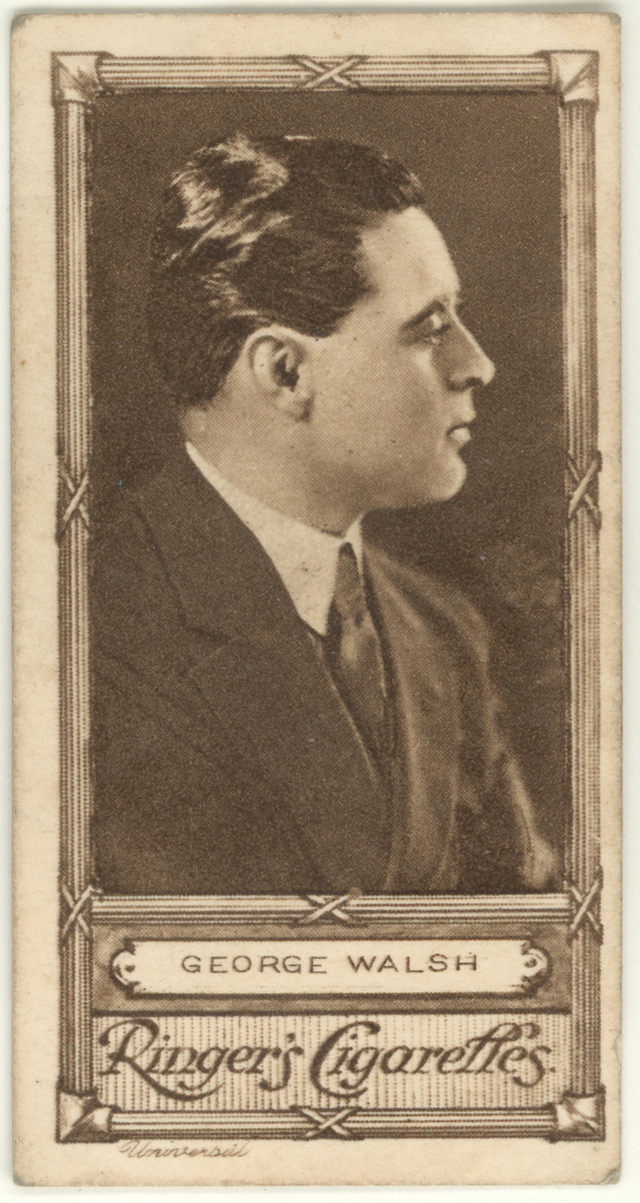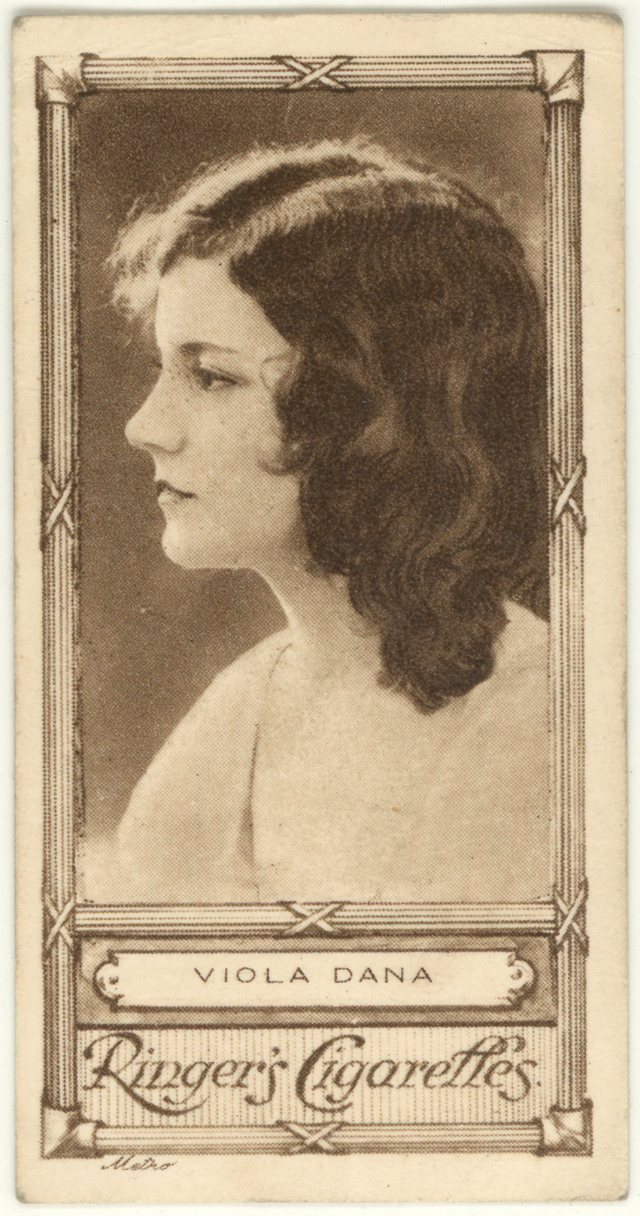Pictures of silent film stars of the 1920s on a series of 50 cigarette cards. Typically of this kind of card, the print quality varies from card to card on the originals and is not great on any of them, but they mostly seem to have originated in well lit star portraits supplied by the studios.
The 1920s movie goers experience was largely dominated by silent movies but saw the introduction of synchronized sound.
In the 1920s movie stars were really stars – with huge salaries, the fashions and activities of the Hollywood greats roared around the world and 100,000 people would gather in cities all over the world, including such diverse cities as London and Moscow, to greet Mary Pickford and Douglas Fairbanks when they toured Europe.
Early silent movies were often accompanied by live piano or organ music and provided enormous entertainment value to audiences captivated by the experience of watching moving pictures on the silver screen. Although they had been previous attempts to introduce sound, it wasn’t until 1923 that a synchronized sound track was photographically recorded and printed on to the side of the strip of motion picture film and made it on to a commercially distributed movie. It would still be seven long years before talking pictures gained total supremacy and finally replaced the silent film era.
The first movie theaters were called Nickelodeons, and were very basic compared the luxurious picture palaces that followed but what an aura of excitement, of laughter, fun and tears surrounded them! Before the introduction of movie soundtracks, movies were often accompanied by scripted music from a piano. Pearl White was the damsel in distress, Francis X. Bushman had lots of adoring female admirers, Theda Bara wrecked homes, Charlie Chaplin and Fatty Arbuckle and Mack Sennett set crazy standards, never to be improved on, and a collection of beautiful ladies adorned the screen. The male and female movie stars were idolized world-wide by adoring fans who could never get enough of them.
The production of The Jazz Singer in 1927 did much to change the industry's perception of talking pictures. The technology had advanced little in the previous five years, but the production was the first feature length talking picture to feature a star singer and actor, Al Jolson, speaking and singing on screen. The huge demand for The Jazz Singer was unexpected, and caused other studios to begin to produce sound films of their own to capitalize on what at the time they saw as a fad.
By 1927 Hollywood had become the center of movie-making in the U.S. with 85% of U.S. movie production occurring in or around Hollywood. Good weather and a wide variety of scenic locations were factors in its success. Whole new industries grew in conjunction with the movie business including zoos and animal supply companies, costume suppliers, and casting agencies. The huge output of U.S. movie studios overwhelmed film production in other countries causing problems with France in particular.
The 1920s represented the era of greatest film output in the US movie market. An average of 800 films were produced annually. Although developments in color and sound were still at the experimental stage, a strong demand for movies, and the opportunity to make money, encouraged studios to produce “talkies” for commercial release.



























































0 comments:
Post a Comment